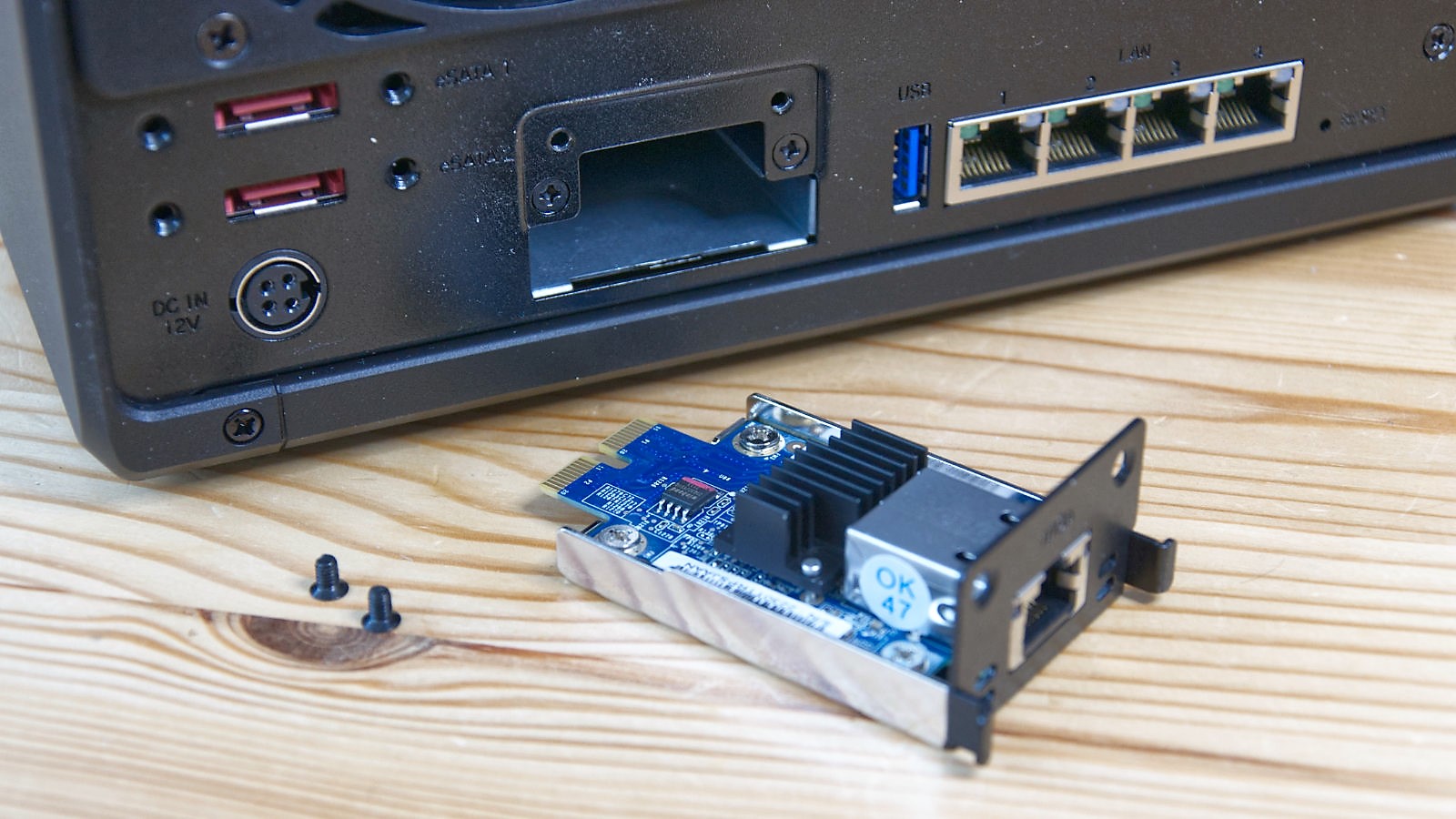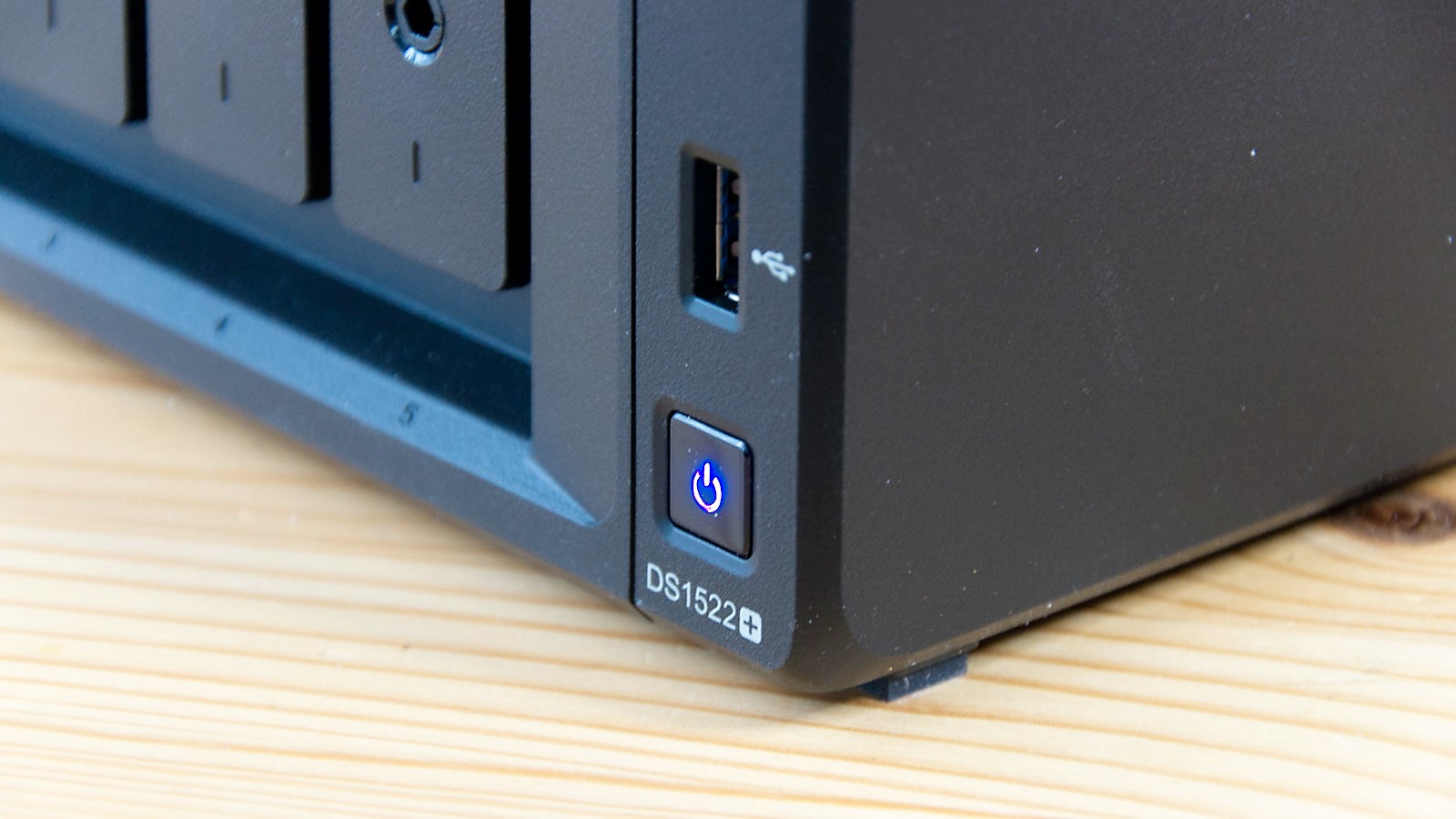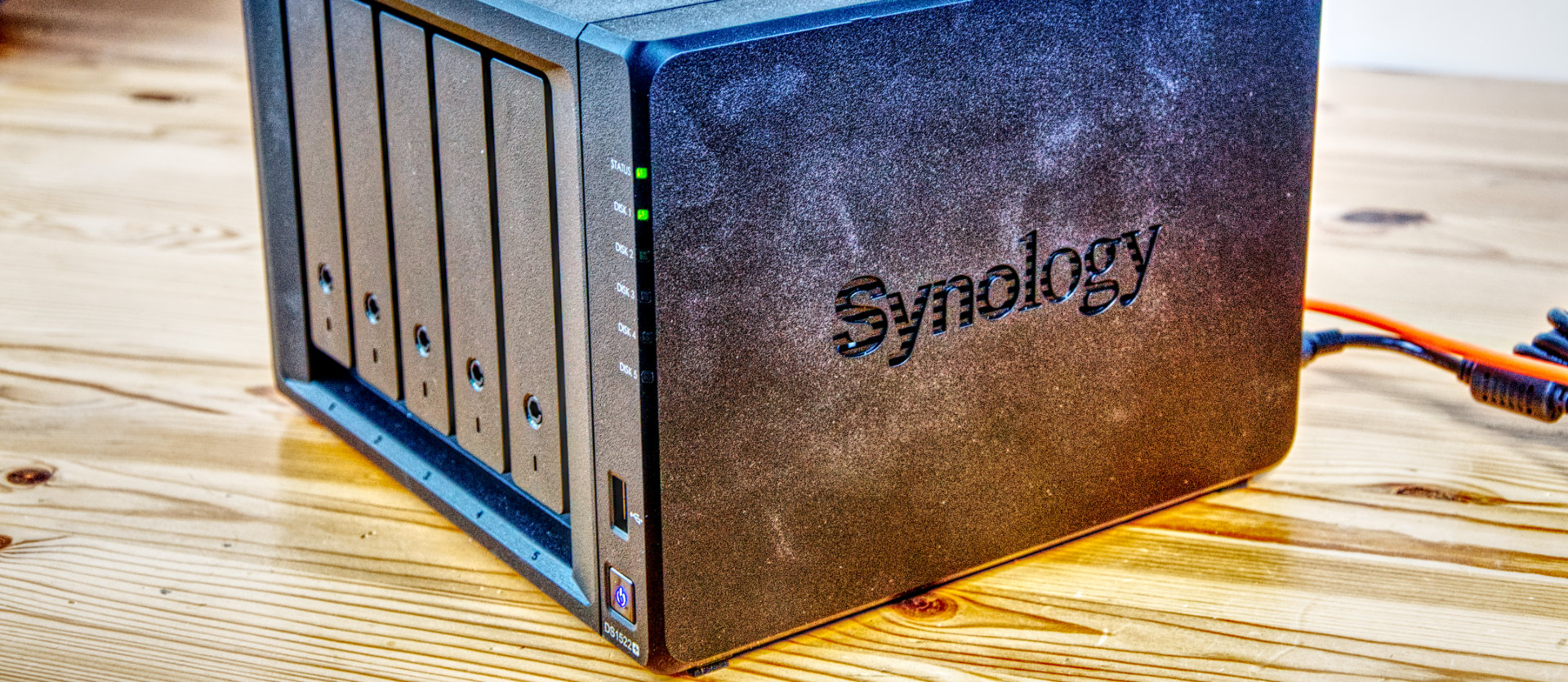Why you can trust TechRadar
In Use
As with all Synology Desktop NAS, the DS1522+ is remarkably easy to configure, although a few curious quirks might trip up someone new to this type of system.
One of the oddities of Synology’s use of NVMe drives is that if you only use a single drive, then caching on it is exclusively read-only. I’m sure Synology has an excellent technical reason why it won’t read and write cache on a single NVMe, but that’s how they implemented it.
Therefore those that want write-caching, and frankly, everyone does, then you need two NVMe’s of the same brand and size.
If you do this, then the system will give you get plenty of warnings about how this might corrupt the file system if the power is interrupted before a write is complete. Investing in a UPS (uninterruptable power supply) is probably the smart thing to do.

Even relatively small NVMe drives will make a massive difference to the read and write speeds. Buying a couple of 256GB NVMe isn’t a large outlay for some dramatic performance improvements, and without these enhancements, it's largely pointless running 5GbE or 10GbE networking.
The other configuration twist is that while you can aggregate the four 1GbE LAN ports with a suitable network switch and the 10GbE port if you have that adapter, that bandwidth will be shared between multiple users, not focused on one.
Synology has been promising SMB Multi-channel as part of DSM for some time, and it was supposed to be in DSM 7.1.
Alas, it isn’t yet. Until this feature is, the network performance of standard configuration is limited to the best speed of one port to each user.
Unless that user has a 10GbE, 5GbE or 2.5GbE network port, and the DS1522+ has the E10G22-T1-Mini fitted, they’ll get around 113MB/s reading or writing to the NAS.
Performance
For testing, we used an E10G22-T1-Mini 10GbE adapter and 2x D4ECSO 16GB DDR4 2666MHz SODIMMs. This increased the potential networking bandwidth to 14 gigabits (aggregate) and the total memory to 32GB.
The drives we used weren’t anything special since we concluded they would be cached anyway.
Having approved hardware for its NAS is a path Synology went down a few years ago when they wanted to sell branded drives. It’s worth noting that Synology doesn’t make drives, and these units are made for them by Kioxia (previously known as Toshiba).
On the approved list for the DS1522+ are, unsurprisingly, the Synology HAT and SAT drives, along with the N300 by Toshiba, IronWolf and SkyHawk by Seagate, WD Red+ and Purple.
But, the only approved NVMe drives are those by Synology.
We used an ordinary NVMe drive for our testing, but Western Digital makes a NAS intended Red series NVMe drive, and other makers are supporting this use case.
We didn’t do a complete test of all the drive combinations and various network aggregation profiles, but the DS1522+ is an excellent performer and rarely appears to push either its CPU performance or memory use to the very limits.
What we did learn from experimenting is that the NVMe cache is critical to getting the best speeds out of this unit, since it enabled the drives to be controlled in a way that optimises their performance.
That you can’t allocate at least one of them as a storage device is slightly perverse, but that appears to be the current policy with Synology DSM.

For those wanting the best connection speed to a single host system, the only choice is to get the E10G22-T1-Mini and a PCIe adapter to connect the two. You can also use the four 1GbE lines to connect the rest of the network to the NAS and aggregate them if you have a suitable switch.
While the E10G22-T1-Mini is expensive, it’s cheaper than a 10GbE switch and will work fine with 5GbE or 2.5GbE adapters on a PC.
We ran tests using a cheap 2.5GbE PCIe adapter and achieved read speeds of 300Mb/s with only a single HDD in the NAS with a Crucial NVMe SSD. With a 10GbE performance, more than 650MB/s is possible, but it requires that the host system is running NVMe storage to deliver the read and write performance needed at that end.
Final verdict
The Synology DS1522+ is an improvement over the DS1520+, but the direction it takes is one the makers want to go, not necessarily its customers.
A dichotomy exists where Synology embraces the future with its Ryzen processor platform and yet fails to include standard technology like 2.5GbE by default. It also continues with eSATA as its expansion technology, an interface most people stopped using a decade or more ago.
There is a logic that with a machine expensive that businesses will invest in 10GbE to distribute the contents more effectively than the four 1GbE ports, but budgeting another $500 or more for a basic switch might make other options more palatable.
That the designers delivered a machine without Gen 2 capable USB ports is a concern since much of the external storage will likely default to this in the next two years.
At some point, those at Synology need to realise that cheap and effective NAS solutions that use 2.5GbE, have HDMI onboard and use USB 3.2 Gen 2 is coming at them from all directions.
Synology has the best NAS OS, probably one of the most polished app selections and makes some sturdy equipment.
Sadly, the DS1522+ is strong evidence that Synology refuses to accept where this market is already going, and the sort of NAS customers want to buy now and in the future.
Don’t misunderstand, the DS1522+ is an excellent NAS, but it could have been amazing if Synology would shelve some of its technology dogma.
Mark is an expert on 3D printers, drones and phones. He also covers storage, including SSDs, NAS drives and portable hard drives. He started writing in 1986 and has contributed to MicroMart, PC Format, 3D World, among others.

